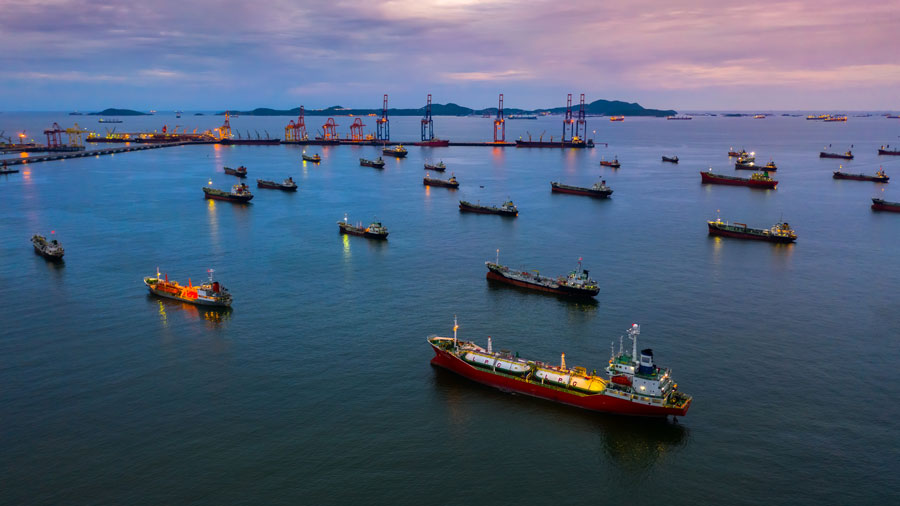The transition toward more sustainable ways of operating is leaving its mark on the maritime transport sector. Encouraged by the IMO, it is working to reduce greenhouse gas emissions and sulphur content in ship fuel.
IMO study
Are we on the right track? The IMO’S fourth study on greenhouse gas emissions reveals that maritime transport has improved energy efficiency by between 21% and 29% since 2008. These positive data endorse the sector’s efforts, bringing it closer to the IMO’S goal of reducing emissions by 50% by 2050.
However, the study concludes that ships’ improved energy efficiency has not managed to appease the huge growth in international maritime trade. For this reason, developing and applying new zero-emissions fuels as soon as possible is essential if we do not want to the work to be for naught.
The fuels of maritime transport’s future
The maritime industry’s energy transition is underway, but it must be a gradual shift that is not just one-tracked, given that different kinds of fuel are being tested to reach cleaner and more eco-efficient transport.
LNG
LNG is spearheading new fossil fuels since it reduces CO2 emissions by 20-30%. When used along with absorbers, it can also eliminate nitrogen oxide and sulphur dioxide emissions almost entirely.
It is considered a “bridge fuel” in maritime transport’s energy transition, meaning that it acts to lead the industry toward the new era of zero emissions.
Methane and methanol
Synthetic methane, biomethane and methanol could become carbon-neutral alternatives used along with LNG propulsion technologies and combustion cells. Moreover, methane can be obtained by reusing the same infrastructures as those built for LNG.
The hurdle is that these fuels depend on renewable energies with low availability, which leads to increased production costs.
Biofuels
The maritime transport industry is continuing tests with 30% blends of biofuels to reduce carbon emissions by 15-20%.
What is more, they can use the LNG infrastructure to reach ships, giving more reasons to use liquid natural gas as a springboard toward bio-LNG or hydrogen and methane mixtures.
Hydrogen and ammonia
Hydrogen and ammonia are clean, renewable energies that guarantee zero carbon dioxide emissions. What is more, they can be used to power both internal combustion engines and fuel cells.
For the time being, the problem with hydrogen is that it is difficult to store. Ammonia appears more promising, given that systems to produce, store and transport it are well-established. On the other hand, its heavy weight and high toxicity levels are aspects to be overcome.
Fuel cells and batteries
Both chemical-reaction fuel cells and electric batteries are sustainable solutions to support main fuel, but their size must be considerably increased to be a true alternative for standard-sized vessels.



Comments are closed.